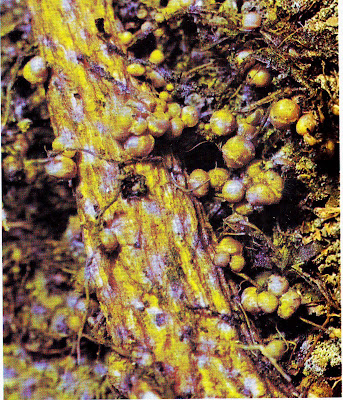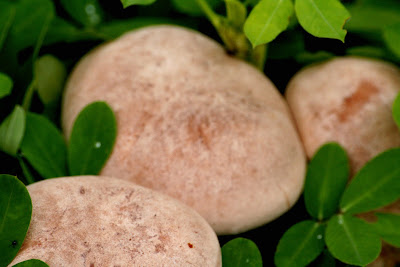Heroism in Our Critical Time
- A Reflective Analysis
Dr Abe V Rotor
Light in the Woods II in acrylic by the author
You can be a hero in many ways. Consider these and rate yourself through Reflective Analysis.
1. If you live a practical life so as to build personal savings, become less dependent on borrowing, and reduce wasteful living in the process;
2. If you practice a lifestyle that favors good health and relationship, without the trapping of vices and ostentatious living, making yourself an example to others;
3. You are an effective teacher using simple tools and methods, instead of sophisticated tools and expensive means, to be able to bring functional literacy to the grassroots bypassed by formal schooling;
4. If you generate power – electricity and fuel – through direct and natural means such as biofuel, and energy from wind and water, and not depend on expensive, destructive, and non-renewable sources;
5. If you convert wastes into new and recycled materials, such as composting and biogas generation, thus reducing pollution and conserving natural resources;
6. If you produce food from your backyard and kitchen (gardening, poultry, food processing), in line with self reliance, home enterprise and clean environment;
7. If you plant trees as an avowed activity to help Nature rebuild the environment, as a means of bioremediation, erosion and flood control, and the like, while increasing the supply of food and useful materials derived from them;
8. If you build your own home that is simple and economical, comfortable and health-promoting, harmonizing it with the aesthetics and bounty of nature, thus enhancing the beauty of creation itself;
9. If your go natural - from food, medicine to personal items, promoting organically grown food, alternative medicine, non-GMO (genetically modified organisms) and the like, thus protecting the health of humans and the environment;
11. If you do not stop learning, if you apply what you learn through skills, and valuing them as well, to enhance your output, and to share them for the benefits of others;
12. If you recognize and uphold the institutions, respecting the laws of the land, and revering great men and women for their works and examples for which they lived and died, without condition of doing your part well;
1. If you live a practical life so as to build personal savings, become less dependent on borrowing, and reduce wasteful living in the process;
2. If you practice a lifestyle that favors good health and relationship, without the trapping of vices and ostentatious living, making yourself an example to others;
3. You are an effective teacher using simple tools and methods, instead of sophisticated tools and expensive means, to be able to bring functional literacy to the grassroots bypassed by formal schooling;
4. If you generate power – electricity and fuel – through direct and natural means such as biofuel, and energy from wind and water, and not depend on expensive, destructive, and non-renewable sources;
5. If you convert wastes into new and recycled materials, such as composting and biogas generation, thus reducing pollution and conserving natural resources;
6. If you produce food from your backyard and kitchen (gardening, poultry, food processing), in line with self reliance, home enterprise and clean environment;
7. If you plant trees as an avowed activity to help Nature rebuild the environment, as a means of bioremediation, erosion and flood control, and the like, while increasing the supply of food and useful materials derived from them;
8. If you build your own home that is simple and economical, comfortable and health-promoting, harmonizing it with the aesthetics and bounty of nature, thus enhancing the beauty of creation itself;
9. If your go natural - from food, medicine to personal items, promoting organically grown food, alternative medicine, non-GMO (genetically modified organisms) and the like, thus protecting the health of humans and the environment;
---------------------
We don't have to engage in grand, heroic actions to participate in the process of change. Small acts, when multiplied by millions of people, can transform the world. - Howard Zinn---------------------
10. If you protect wildlife and help rebuild the natural habitat of threatened and endangered species of plants and animals in ecological sanctuaries, and by enforcing laws in protecting them;11. If you do not stop learning, if you apply what you learn through skills, and valuing them as well, to enhance your output, and to share them for the benefits of others;
12. If you recognize and uphold the institutions, respecting the laws of the land, and revering great men and women for their works and examples for which they lived and died, without condition of doing your part well;
Courtesy of San Vicente (Ilocos Sur) Municipal Hall
13. If you make use of your time fully in work and study, and not live idly, thus living a life of example to the youth in particular - diligence, persistence, sharing, and most important, valuing of life’s purpose;
14. If you build a happy family and provide well its needs, and securing a bright future of your children - and even your children’s children;
15. If you engage in an enterprise, keeping in mind and applying it as well, through entrepreneurship that is equitable to all concerned stakeholders such as the Grameen Bank Model in Bangladesh founded by Nobel laureate M Yunus;
16. If you uphold and practice the principles of equality, fraternity and liberty, in every act and decision you make, providing room for kindness and forgiveness on one hand, and firmness and resolve on the other, even in the face of danger;
17. If you cannot quiet your mind and conscience with sin – whether it be a sin of commission or omission – until you have done your part in amending it and preventing it in harming other people, in corrupting society, and the environment;
18. If you are patient, forgiving, resilient, understanding, and such other qualities that enable you to rise above difficulties of living, particularly in times of calamities - not only for your own benefit, but more for those who are less fortunate than you are;
19. If you always remember to pray to that one God for his Providence, recognizing His gifts, through expression of Goodness to yourself, to Humanity and to Mother Earth;
20. If you are aware and honestly believe that you are “passing this way but once,” thus living the life that best earn your passage to that kingdom of your Creator – however humble that life may be.
Congratulations! Live then the life of a hero in these critical times.









2.jpg)




























.jpg)











